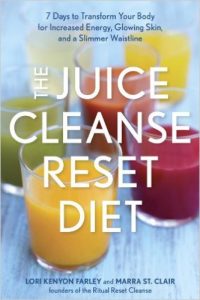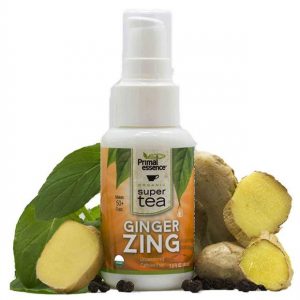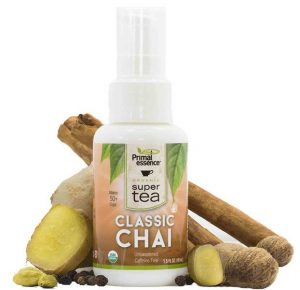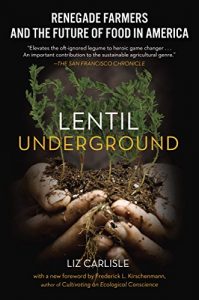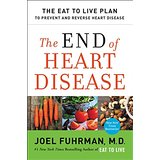Category Archives: Plant-Based Living
What We Eat
“Eat food, not too much, mostly plants.” –Michael Pollan
After over a decade on a whole-foods, plant-based diet – with long-term forays into oil-free as well – we started to take stock and make some changes. Neither of us had lost any weight, despite a reasonable exercise regime – and didn’t feel as energetic as we’d like. We were also concerned about brain health, sufficient quality Omega-3s, and took a lot of cues from the lifestyles of the “blue regions.”
To be clear, we don’t believe that there is any one diet that works for everyone. But there are some basic underlying givens – organic and non-GMO to start. The Environmental Working Group’s Dirty Dozen (or 18) and Clean 15 list (ewg.org) is the place we start to decide where to spend our organic food dollars. To augment what we get weekly from our CSA.
To change from such a long-time vegan lifestyle was not easy, but we both agreed it was time, We started by just adding a little fish to our diet to ensure quality omega-3s. But not just any fish or seafood – we made a list based on, again, the Environmental Working Group’s (ewg.org) high omega 3s and low mercury list combined with the Monterey Aquarium’s sustainability list. Those lists have since been combined so there is now just one easy source (ewg.org). With a couple minor exceptions, these are all wild-caught seafood from sustainable populations. We also have a secondary list that is not particularly beneficial, but not particularly harmful – either to us or to the environment. Clams, shrimp, even the occasional lobster lands on that treat list – but still, all wild caught. Nothing farmed, except for Rainbow Trout or from the evolving totally land-locked aquaculture community.
Our friends were delighted! Entertaining us was now so much easier. To accommodate our diet, they happily centered meals on wild-caught Alaskan salmon and everyone at the table was content.
After a year or so, we decided to look further. While we had lost weight on five-day all-organic juice and smoothie fasts, we inevitably gained it all back. We both wanted to lose about 15 pounds – permanently – to be healthier, look better, and regain large swaths of our closets. So we needed to find a diet that was satisfying for the long term and would also help us meet our weight goals.
We explored many options to find an approach that was grounded in evidence with a science that made sense. We decided to try Mark Hyman’s 21-day “Eat Fat, Get Thin” diet. It was pretty much life-changing for both of us. We found it very easy to follow, never felt deprived and started to lose weight – slowly and consistently. After our experiences on an oil-free plant-based diet, and having been steeped for decades in “low-fat” and “a calorie is a calorie” propaganda, it was really hard to add all those healthy fats. But we did, and, for us, it worked.
Hyman adopted the newly minted “PEGAN” to describe his maintenance plan – the best of paleo and vegan – and we have embraced a lot of it permanently. We still don’t eat meat or fowl. But we have dramatically limited our grains and beans, have added lots of healthy fats, continue to eat small portions of wild-caught fish and seafood, and are both at – or very near – our goal weights. Our plates are about 2/3-3/4 vegetables, 1/8-1/6 protein (fish, tofu, etc.), with nuts, seeds, organic extra-virgin olive oil, and three specific kinds of cheese as condiments. We cook only with avocado and organic coconut oils, (and very occasionally with ghee and organic sesame oil). The Organic EVOO is always added after cooking.
The grains: Quinoa (actually a seed), black rice, wild rice, organic brown rice (only occasionally and cooked in a big pot of water like pasta), Italian Arborio rice, amaranth, and millet. We experiment with a little bread – mostly organic mixed seeds and grains (Dave’s Killer) and whole-grain gluten-free (Udi’s). And we limit pasta to GF quinoa, red-lentil, and Miracle/Shirataki Noodles (made with Konjac). Plus we also spiralize a lot of veggies, which we actually find very satisfying.
Dairy: We continue to use only organic plant-based milk (almond and coconut plus canned full fat coconut milk) and, for the most part, plain organic coconut and almond yogurts. But we have also recently toyed with grass-fed organic full-fat cows milk Greek yogurt (Stonyfield’s Totally Grass-Fed Organic plain Greek yogurt) – to see how we feel. As for cheese – this is a very personal list: Only authentic Italian Parmigiano Reggiano, authentic Greek Sheep’s Milk Feta and French goat cheese (Chevre). That’s it. We trust these European sources far more than American ones and can find them easily even in the big box stores (they just cost a little more).
At the same time, we are giving up most vegan cheeses because they seem to be so full of undesirable ingredients. But we are withholding judgment because of the new wave of clean plant-based dairy from Miyoko, Kite Hill and other local sources. But as of now, they are very pricey. We have stopped eating most of the ersatz vegan substitutes like sour cream, some of the yogurts, and butter-substitutes because they have very long ingredient lists filled with things that we prefer not to consume. To date, we have not been successful in making our own plant-based yogurt. But we will continue to try.
Eggs? Yes! Pastured, organic, free-range. Three times as much as supermarket CAFO eggs, but there is a real difference that you can see and taste. And the consensus, at least this year, is that the right eggs are healthful. So an over-easy egg on a mess of steamed power greens (baby chard, spinach & kale with a pinch of turmeric) drizzled with EVOO is the standard breakfast these days.
Sweeteners are confined to organic stevia, organic maple syrup, organic dates and organic strawberry jam – and an occasional drizzle of hyper-local honey from our neighbors’ hives. We also stock organic peanut butter, sun butter, and almond butter, along with an array of olives, capers, pickles, artichoke hearts and lots of other unctuously lovely foods. Umami comes from an assortment of mustards and five kinds of miso. We’ll leave a full panty list for another post, but suffice it to say there is very little processed food of any kind.
Beverages are mostly organic green tea, lemon filtered water, iced tea, an occasional glass of wine (and for my husband coffee and beer).
Bottom line, we rarely, if ever, feel deprived, and find it remarkably easy to dine out or be a dinner guest (we just get a little flexible and stay on course at home). We think that choosing what and how one eats should be a continually evolving process – informed by reliable, reproducible, evidence-based studies. That it is important to not get stuck with titles, or too invested in one’s food choices as a large a part of one’s identity – because then you feel less free to change. Try something that resonates and if it works, great. If it doesn’t, step back and try something else. (Oh, and BTW, my IBS which has informed my life for at least seven years has mostly disappeared……).
Our Seven-Day Juice Cleanse
We just finished a 7-day cleanse! Our guide throughout was “The Juice Cleanse Reset Diet” by Lori Kenyon Farley and Mara St. Clair. It was a successful experience for both of us – we lost our vacation weight and a bit more. Hopefully the trend will continue. But more important, we hope that it’s given our bodies a rest and perhaps allowed them to start healing some long-time issues. Time will tell, but we both feel pretty good with some increased energy. And it was a real education.
For a week, we ate and juiced only organic produce (except for the Clean 15) so just finding it all at some kind of reasonable price was a bit of a project. Whole Foods, CostCo, Trader Joes and Stop & Shop were our go-to resources. We bought and juiced through most of: six pounds of apples, eight pounds of carrots, four pounds of pears, two pounds of kale, three pounds of mixed baby greens, a pound of baby spinach, two pounds of strawberries, a pound and a half of blueberries, two pounds of sweet peppers, eight cucumbers, ten kiwis, seven mangoes, seven large beets, six heads of romaine, four bunches of celery, a pineapple, a bunch of lemons and limes – and bananas for the smoothies (should have taken a photo of the kitchen counter covered in gorgeous food). I haven’t added up the cost yet, but it was pricey – albeit clearly less than buying these from a juice bar or delivery service, and a lot less than a spa :).
Part of the plan is to drink 16 oz. of water seven times a day and 16 oz. of juice about six times. So if you really don’t like plain water – and I don’t – that was a problem. Coincidentally, as if on cue, UPS delivered a gift – three small pumps of Primal Essence’s super teas (primalessence.com). Each a different flavor. The instructions said just pump a couple of squirts into a glass of water; instant flavor from organic whole plant-extracts! Tasty and healthful. During our cleanse, I switched around among Ginger Zing, Classic Chai, Peppermint Splash and a squeeze of lemon. It really made drinking that much water a lot easier, more pleasant (and even more healthful). When we were going out, I just dropped one in purse for instant interesting water. Each little bottle contains 225 pumps. These are a real find for people who find water just too boring to drink – I want to try the other flavors: Tumeric Tulsi, Vanilla Chai and Lemon Ginger (especially the latter).
We also learned more than we wanted to know about our venerable Omega 1000 juicer that has been sitting on the shelf for, perhaps, a decade. Toward the end of this severe workout, it started showing its age. Trying to control it as it wobbled all over the counter at 3600 rpm was just a little scary. Yet, even out of warranty Omega was there for its customers: we just sent in the broken arm for a free replacement and a tech walked us through the process of re-balancing and explained some of the finer points of cajoling this particular unit. When it’s time for a new one, it’ll definitely be an Omega. Our Vita-Mix performed admirably as usual for the smoothies and also for some of the greens that we had trouble juicing.
Bottom line: a very satisfactory week. We weren’t really hungry. We looked at this as a project and “went with the flow.” But it was a lot of work and we ducked outside engagements as much as possible although we both went to the gym for our usual class and workout. But we definitely both agreed that we will do it again – probably twice a year (or maybe even more). One word of advice for a half a couple trying to do this alone: try to engage your partner. I can’t imagine cleansing while living with someone eating regular food. It just wouldn’t be much fun either.
The Lentil Underground – Renegade Farmers and the Future of Food in America
by Liz Carlisle, Avery 2015 $16 (Amazon $12)
An improbable group of renegade Montana farmers, led by David Oien, a former philosophy student, fight against Big Ag, local conventional farmers, GE seeds and worn-out soil to launch a sustainable business. Oien decided to return to his family’s 280-acre farm and, defying the regional orthodoxy, grow organic lentils – the edible seeds of plants that return nutrients to the soil.
Generally considered part of a family of weed crops, lentils are actually a very marketable commodity; they’re an inexpensive protein that’s rich in fiber, B1, folate, and amino acids, that doesn’t require irrigation and makes its own fertilizer. But marketing this Big Sky strain of organic small, black Beluga lentils to other potential growers as well as to the country’s distant taste-makers became the challenge. He needed help and that support emerged from unexpected places.
A number of remarkable farmers and other characters populate this tilting-at-windmills drama including buttoned-up, financial whizzes Doug and Anna Crabtree, the conservative Christian homesteading Manuel family, Senator-Organic farmer Jon Tester, eco-friendly builder and jack-of-all-trades Bud Barta along with a half dozen others. With their help, David Oien founded Timeless Natural Foods and grew it into a million dollar business that includes several unique lentil products and a full complement of other high-end quality grains.
To do that, he first had to convince chefs to try his lentils and then put them on their menus highlighting these unique Beluga Lentils. Word spread within the culinary world which netted Oien contracts with Trader Joe’s and Whole Foods and hundreds of smaller healthy food stores (some of which came with hard lessons and losses). But Orien persevered and his network of growers stood by him.
Almost as interesting, is the story of the book’s Montanan author: Harvard & UC Berkley trained, former country singer Liz Carlisle also served as Legislative Correspondent for Agriculture and Natural Resources in the Office of U.S. Senator Jon Tester. Today she is a Lecturer in the School of Earth, Energy, and Environmental Sciences at Stanford University, where she teaches courses on food and agriculture, sustainability transition, and environmental communication. Dr. Carlisle approaches her subject “The Lentil Underground” by integrating deeply-felt stories about the pioneers who risked all to farm holistically with clear, exceptional essays on the science of farm ecology.
Good Clean Food Shopping Smart to Avoid GMOs, rBGH and Products that may cause Cancer and other Diseases
By Samuel Epstein, MD and Beth Leibson – Skyhorse Publishing 2013. $24.95/ Amazon $16.99, $6.50 used
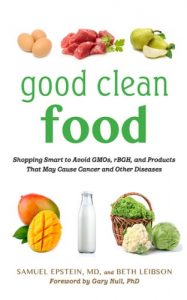
Dr. Epstein is a voice we should hear. His long and deep expertise on the avoidable causes of cancer has been shared in twenty books and 270 peer-reviewed articles. He is professor emeritus of environmental and occupational medicine at the University of Illinois School of Public Health and chair of the Cancer Prevention Coalition. He has also served as president of the Rachel Carson Council and other industry organizations. Co-author Beth Leibson knowledgeably unpacks this far-ranging erudition to make it accessible and understandable to the layperson.
This is a short read outlining important concepts that are clearly described – the main foci are:
Milk – the US permits the injection of the genetically-engineered growth hormone (rBGH – named by Monsanto Posilac) into dairy cows which causes elevated concentrations of IGF-1 (Insulin-like Growth Factor). The upside is that it increases milk production by 11-15%, the downside for the cow is that they get sick, for instance 25% get mastitis which adds more pus to the milk and which also requires antibiotics. About 20% of dairy farms in the US inject their herds with rBGH which creates IGF-1 but, since labeling is not required, consumers have no idea. The downside for the consumer, in addition to the antibiotic load, is that IGF-1, which is not destroyed by pasteurization, encourages cells to grow – in children it’s usually bones and organs, in adults it can be cancer cells. So, if you choose to continue to use dairy products, buy only organic from grass-fed herds. BTW: The EU and Canada outlawed rBCH and IGF-1 in the 90s. Better yet – plant milk.
Beef – Starting in the ‘50s, US cattle have been injected and/or fed a wide variety of sex hormones and other growth drugs. Today that cocktail, injected into 90% of all US cattle, contains natural estradiol, testosterone, and progesterone plus synthetic hormones zeranol, trenbolone, and melengesterol – all designed to add quick weight and roughly $80 additional profit per animal. The EU outlawed this practice in 1989. Industrial farmed meat cows are also fed prophylactic antibiotics which has contributed to the creation of superbugs that jump to humans and are resistant to most if not all antibiotics. Other beef topics include nitrates (and the link between hot dogs and pediatric brain cancer), radiation, the significant advantages of grass-fed beef and, again, the need for labeling.
Produce – The Dirty Dozen/Clean Fifteen – The Environmental Working Groups master list of the dozen most likely fruits and vegetables, when conventionally grown, to be drenched with pesticide – add kale and collards to the EWG list. The Clean Fifteen lists those least likely to be tainted. The authors also suggest buying “American” since imported produce usually contains higher percentages of pesticides. This chapter then details the negative effects of these insecticides and herbicides, many of which contain Organophosphates, which has been shown to block acetylcholinesterase that stops nerve cells from firing. The demonstrated effects include increased incidences of ADHD, autism, reduced memory and lowered IQ. The answer is organically grown produce.
Corn and Soybeans & GMOs – These are the two most prolific foods on the planet; corn, for instance, provides over 20% of all human nutrition – but both are largely used for animal feed. Both can be cultivated as vegetables or as oil or as…. The broad-spectrum herbicide Roundup, a ramped up version of Glyphosate (which is a type of organophosphate), was developed by Monsanto to increase field yields. Monsanto also developed many Roundup-ready, patented crop seeds that can tolerate the pesticide. Initially Roundup works, but then, over time, the weeds become resistance and the farmers find it necessary to increase the quantity of Roundup creating more dangerous conditions for farmers and consumers. Glyphosate-resistant alternatives exist but share the same problems – they kill off amphibians as well as pests and weeds and they contain an inert ingredient (a surfactant) to help the chemicals penetrate the plants which has shown to be harmful to humans. A newcomer is Bt corn (Bacillus thuringiensis), a plant that exudes its own pesticide which is also dangerous to other living things, like butterflies and humans. The chapter concludes with a review of the politics as well as alternatives – especially non-GMO organic.
Chicken & Eggs – Conventionally raised chickens (and eggs) are fed a wide range of ingredients to encourage speedy growth including prophylactic antibiotics – which pass to humans creating similar problems to those of beef. At first brush, the answer seems to be organic. In order to be labeled organic, broilers and egg-laying hens alike, must be fed organic feed without antibiotics (except for illness), hormones or pesticides and they must have access to the outdoors. An organic egg comes from an organic laying hen. But beware the various levels of “organic” – large-scale industrial and some family-size organic egg farms may offer an open door with an impenetrable maze to access it so there is no “scratching in the dirt.” The key descriptor seems to be “pasture-based” or “free-range” organic where mobile housing moves frequently to fresh fields and the birds are outdoors as often as inside. All of this applies to “broilers” as well.
Avoiding GMOs – This gets harder every day; again look for the word “organic” otherwise almost any, for instance, soybean or soybean derivative will likely be from GMO plants– but at least know the legal definitions: “100% organic” means just that. “Organic” means 95% of ingredients are. “Made form Organic Ingredients” 70-94% is organic. The word “organic” on the ingredient panel only means that less than 70% is organic. An on fruits and vegetables – look for a label with a 5-digit number beginning with 9 – that’s organic. Beginning with an 8 means GMO (but that’s rarely labeled). Four digits beginning with 3 or 4 means conventional.
The remainder of the book discusses detoxification and future trends like Budget organics – private labels, Farmers’ markets, CSAs Buying clubs, Food Co-ops. And trends among various ethnic groups and around the world – all of which are well worth reading. Finally check out the organic industry watch dog: Cornucopia Institute www.cornucopia.org.
The End of Heart Disease
by Joel Fuhrman, MD, Harper One, 2016
According to Dr. Furhman, his Nutritarian Diet will make it impossible to have a heart attack, while it reverses obstructive coronary artery disease (CAD) and radically lowers your cholesterol and blood pressure, reduces your weight, restores normal bowel function, improves your immune function and maintains youthful vigor in the face of aging. Fuhrman’s Nutritarian diet can be totally plant-based or it can be flexitarian which includes some animal products albeit in very small quantities (three small servings a week). But in either case, it is predominantly vegetables, beans seeds and nuts. The goal is a diet that is nutrient dense, hormonally favorable (avoiding, especially, excess insulin and insulin growth factor [IGF-1]), nutritionally adequate (including all essential nutrients), and avoids toxins. The basis for the diet’s choices are ANDI scores (Aggregate Nutrient Density Index) that ranks foods based on the nutrients delivered for each calorie consumed.
Mala at Wailea Marriott – unexpected plant-based meal in a spectacular setting
Searching out plant-based, vegan options in Maui proved a positive and fun adventure. The biggest surprise, not listed anywhere, was the restaurant at our hotel. What a surprise! Mala has a separate Gluten-Free & Vegan Menu. Chef Mark Ellman and his business partner Shep Gordon teamed up with Top Chef Finalist Chef Sheldon Simeon (and one of Food & Wine 2014 Best New chefs) to create delicious, organic and locally sourced dishes that are an eclectic blend of Mediterranean and Hawaiian flavor profiles.
The setting is simply gorgeous. The upper level airy dining room features a clean, contemporary, teak-accented look with long, unobstructed water views. If weather permits, dine on the lanai.
On the Gluten-Free and Vegan Menu , there are four vegan starters, one salad, and a disappointing single entree. But we found that the server and chef were happy to work with us to create a second plant-based entree since we always share and prefer to taste a variety of offerings. We combined one of the starters with a few of the five vegan sides. Island Vegetables featured well seasoned cauliflower, mushrooms, carrots and baby bok choy on a bed of coconut peanut sauce ($28). We also sampled the fried local pickels ($7) and the Fried Tofu ($12).
